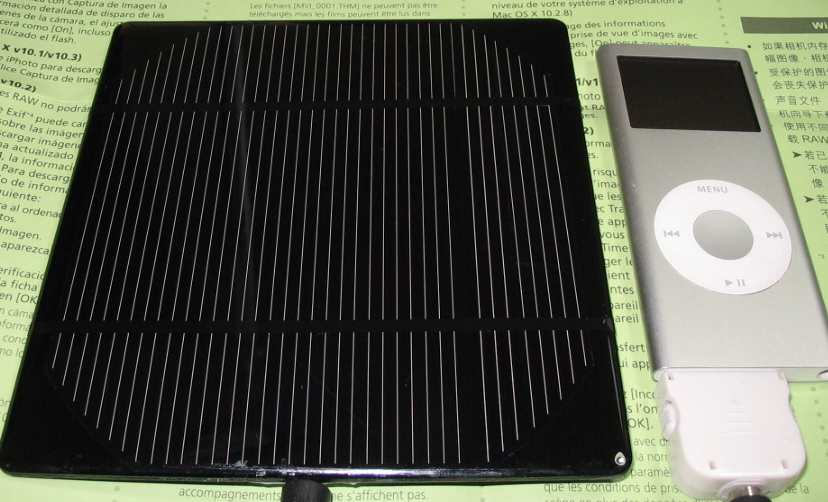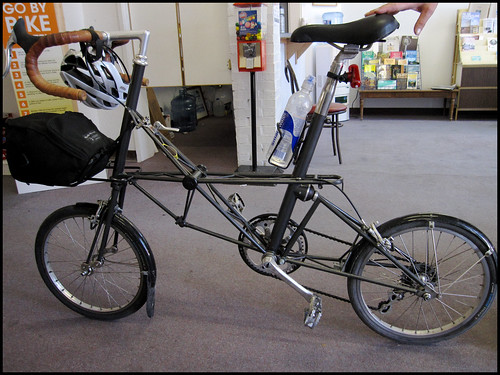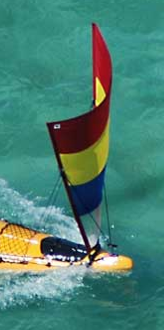
A friend and I will pedal 420 miles across Iowa in July. We’ll be camping, i.e. no electricity, so to record the whole ride on GPS, I wanted a solar panel for my iPhone.
To find exactly the right thing was unexpectedly hard. Most consumers want compactness, so the ready-made solutions are almost all iPhone-sized, with a tiny solar panel, generating only a trickle of current (< 50 mA). Basically a Playskool toy, insufficient to charge the phone while it’s being used.
There are also kit solutions out there, and I LOVE that sort of project, but am busy with more important stuff these days. So the hunt was on for an inexpensive larger panel to generate similar current to a USB car adapter (450mA).

There are a few out there, but my favorite was that pictured above, sold by radio-factory.com, unequivocally the scariest ecommerce site I have ever used. Product description in broken English, product title in French. They claim to be located in Alabama, but their domain is registered to an address in Shenzen, China, and they say “allow 20 days for delivery.” The site’s purchase confirmation was particularly disquieting: “Dummy string. Actual confirmation message would go here.”
Yet I think they are legit. Clues:
- Unique page content — a criminal would simply rip from other sites.
- PayPal hasn’t banned them.
- Seller’s physical address is verified by PayPal.
- Only complaint on the web was about delayed delivery.
We’ll know in 20 business days. If they deliver, I will link to their site. I’m interested in the process partly because this may be the wave of future e-commerce. For cheaply shipped items, buy directly from the factory or a China-based middleman.
But consider the amount of waste involved in this transaction. An individual box will (I hope) be shipped from an individual in mainland China to an individual in California. If one considers the entire value chain, I might have a smaller ecological footprint simply to bring one huge 6-volt battery with me, and recharge from that.
Another solution, extremely low-footprint, very fun project, but way too time-consuming, would be to mine your local Craigslist for a few solar-powered garden lights. These sell new for under $10, and for much less used, if you can find them. Then build your own charger.
UPDATE — JUNE 8 2009 — Yes, radio-factory.com is a legitimate website. They delivered my solar panel within 20 business days, as promised. The product is totally sketchy: clearly assembled by hand, no casing on the back, exposed wiring and solder joints — really just a prototype. Also, they failed to include the promised iPhone adapter. However, the panel itself works, it does charge my phone, it was super cheap, and so I will give them 2 out of 5 stars, with a bonus for low price.
—





 Recently bought a Benchmade 556 (the oddly branded “Mini-Griptilian”) for camping and fishing. Indestructible, expensive, nearly as small as a Swiss Army knife, but more useful: bigger, higher-quality, locking blade, a serrated section, and a comfortable non-slip molded handle.
Recently bought a Benchmade 556 (the oddly branded “Mini-Griptilian”) for camping and fishing. Indestructible, expensive, nearly as small as a Swiss Army knife, but more useful: bigger, higher-quality, locking blade, a serrated section, and a comfortable non-slip molded handle.